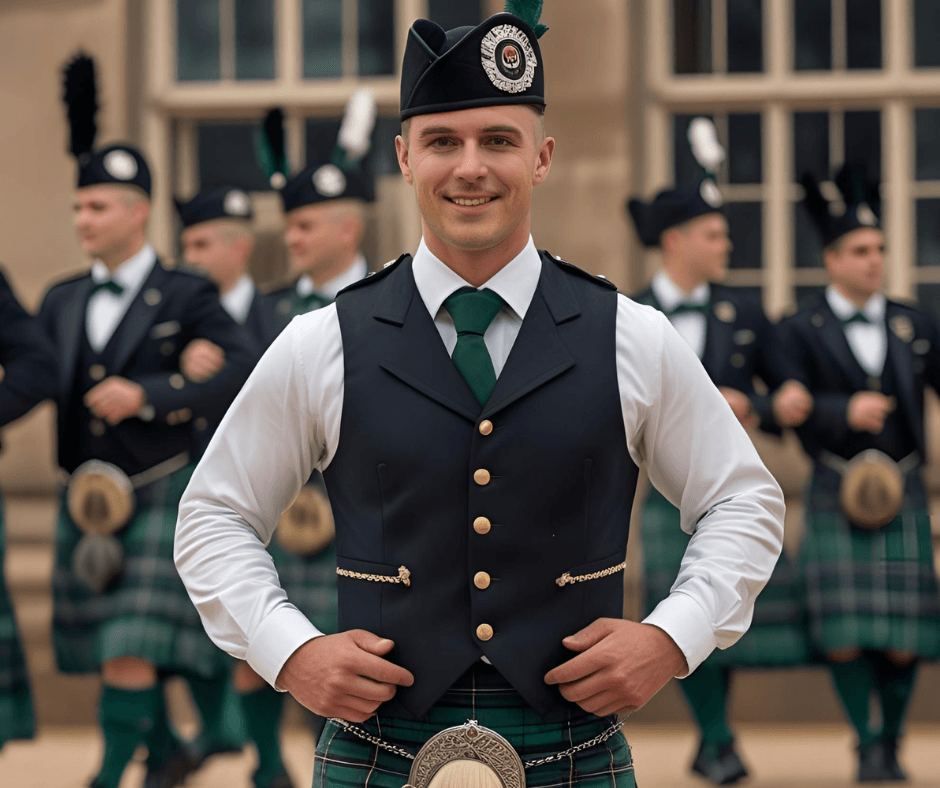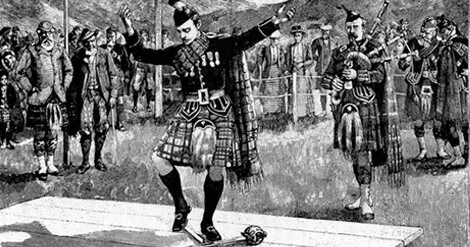
Why We Need More Men in Highland Dance
Highland dance is one of the most demanding, athletic, and historically rich forms of dance in the world. Rooted in Scottish warrior tradition and performed to the rousing rhythms of the Great Highland bagpipes, it is a discipline that requires exceptional strength, precision, artistry, and endurance. And yet, in today’s competitive landscape, men are noticeably underrepresented—particularly at beginner and intermediate levels.
This gender imbalance is not only unfortunate; it’s a profound loss to the tradition, to the sport, and to the men who could thrive within it.

A Warrior’s Dance: Historically Male Origins
Highland dance did not originate as a pastime for the faint-hearted. Its early incarnations—like the Sword Dance (Gille Chaluim)—were performed by male warriors, often before battle to demonstrate readiness and courage, or after victory to celebrate survival and skill. Other dances, such as the Reel of Tulloch, evolved from communal masculine gatherings, with energetic footwork and strategic timing symbolic of coordination and strength.
Even the Seann Triubhas, though danced solo and expressive in nature, tells a story of rebellion and resilience—cast in the historical context of the Highland Clearances and the banning of traditional dress. This was, for centuries, a masculine art form, full of competitive pride and physical prowess.
It wasn’t until the 20th century that women began to dominate the competitive Highland dance scene—and with incredible success. But the shift in demographics led, over time, to a perception that Highland dancing is a “girl’s sport”, especially outside of Scotland. That perception must be challenged.

What Male Dancers Bring to Highland Dance
The men who do compete in Highland dance bring incredible energy, elevation, and power to the stage. Their physicality lends itself beautifully to the athletic demands of the dances—particularly the Highland Fling and the Sword Dance, where elevation, sharp cuts, and strength-based control can define a performance.
In competitions, male dancers often exhibit:
- Dynamic elevation with visibly higher jumps and extension
- Striking stage presence and bold interpretation
- Exceptional stamina, particularly in championship reels
- Muscular control, which adds visual clarity to quick footwork and transitions
Having more men in the sport raises the standard across the board, pushing dancers of all genders to train harder and reach new levels of excellence. The diversity in interpretation, movement style, and energy enriches the art form and honors its robust roots.

Breaking Down Barriers
There are several reasons why boys and young men may be reluctant to pursue Highland dance today:
- Social stigma: Dance, in many cultures, is still wrongly viewed as unmasculine.
- Lack of male role models: Few boys see men actively dancing, teaching, or judging Highland.
- Limited recruitment: Outreach efforts at schools or community events often fail to emphasize the appeal of Highland dance to boys.
- Perceived isolation: In many classes or competitions, a lone boy may feel out of place in a sea of girls.
But these barriers can—and must—be broken down. We need male teachers, mentors, and ambassadors who visibly represent strength in Highland dance. We need dance schools to actively recruit boys, framing Highland not just as an art, but as an elite athletic pursuit comparable to gymnastics, martial arts, or competitive running.
Most importantly, we need to tell the true story of Highland dance—not as a decorative performance, but as a legacy of warriors, rebels, and athletes.

Building the Future: Why Inclusion Matters
To grow and preserve the integrity of Highland dance, we need to ensure it continues to reflect its full heritage—and that includes the male voice, body, and presence.
- Competitively, more male dancers mean stronger divisions, greater international representation, and more visible role models for the next generation.
- Culturally, it means honoring the dance’s historical origins and correcting modern misconceptions.
- Artistically, it opens up new dimensions in choreography, partnering (as seen in choreographed pieces), and group dynamics.
Dance is not defined by gender—it is defined by excellence, commitment, and passion. And Highland dance, in particular, is a sport and art form in which men can excel, inspire, and lead.

A Call to Action
To every young boy who’s felt the rhythm of the pipes, to every parent unsure if dance is “for their son,” and to every teacher wondering how to recruit more boys into their class—the answer is simple:
Highland dance is for everyone. And it needs more men.
Let’s rebuild the bridge between this deeply masculine tradition and the modern men who have every right—and every reason—to claim it. Not just for the sake of diversity, but for the future of Highland dance itself.

The pipes are calling. The boards are waiting. Let’s make sure the next generation of dancers includes the men this tradition was built upon.